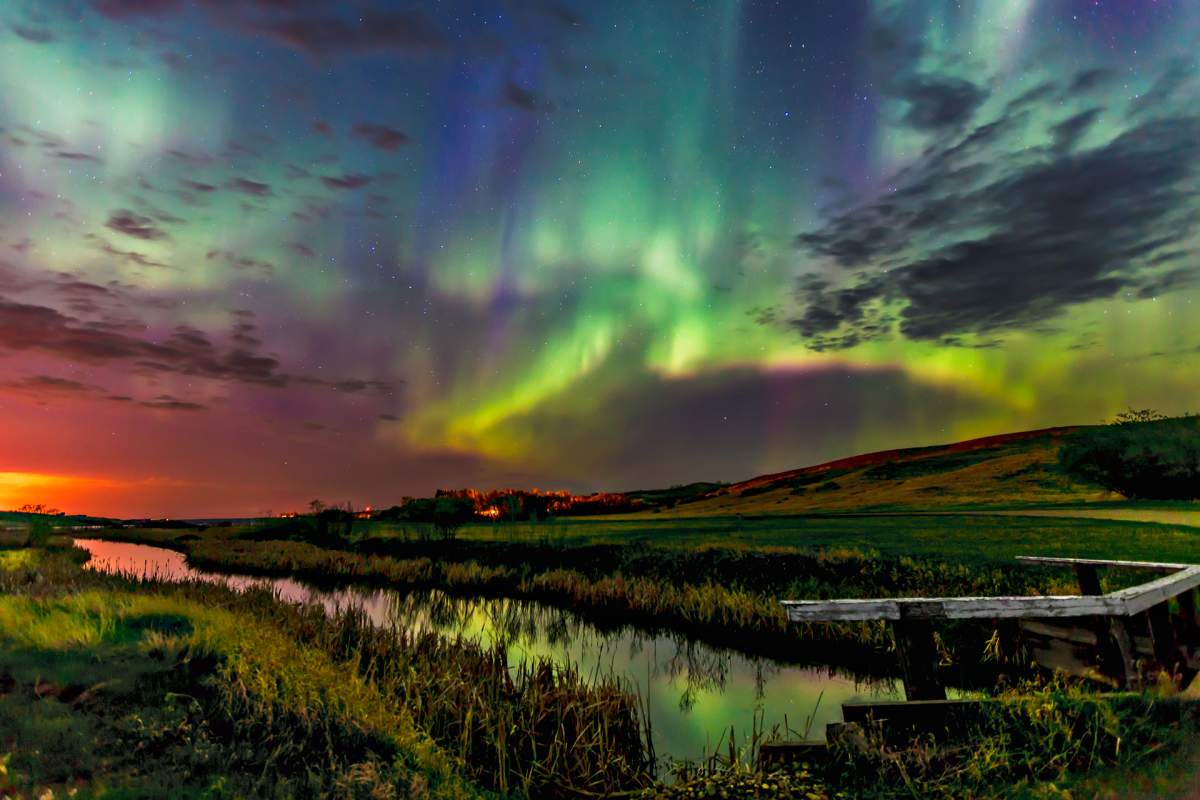SASKATOON – They are a spectacle that dazzle your eyes as they dance across the sky: the Aurora Borealis occurs when electrically charged particles from the sun interact with gases in the atmosphere to emit different colours of light: and they make the ideal subject matter for enthusiastic photographers.

“They’re never the same twice. You can go out every night and always see something different,” said Colin Chatfield, who people have started calling “The Aurora Hunter.”
Saskatchewan is one of the best places to view the Northern Lights.
The aurora borealis, also known as the northern lights, has made for many late nights for a group known as the Saskatchewan Aurora Hunters.
“It really exploded just due to media coverage, it really took off. It started in October with about 20 people and today we’re at 722 members,” explained Chatfield.
“Anybody can do it. It seems like something that’d be really hard, but it’s not – it’s super easy. You just have to have the right settings and that you can do by even just playing around with your settings,” said Denise Reddekopp, a member of the Saskatchewan Aurora Hunters group.

Get daily National news
“When the aurora oval is quite active, we start texting each other,” said another member, Cynthia Salgado. “We might go out five nights in a row and a lot of us work in the morning and it’s very hard to go to work the next day, but we still do it.”
The University of Saskatchewan is the only university in Canada involved in an international network of radar stations called “SuperDARN” that maps aurora activity in the atmosphere.
“We’re definitely a world leader. It helps with our location in Canada: we see great auroras all the time,” said Glenn Hussey, a professor at The Institute of Space and Atmospheric Studies.
Hussey said recently the province has been situated under what’s called the aurora oval, a region where the effects of space weather are experienced most intensely. But as cities grow, the spectacular light show is getting dimmer.
“Part of the problem is the City of Saskatoon doesn’t seem to be on board with any light pollution policies and we’re seeing these new areas crop up,” said Chatfield. “Grasswood is horrible for light pollution and Stonebridge. They’re not really using these full cutoff lights like they should be.”
Global News reached out to the City of Saskatoon, but no response was given on the matter.
To get better viewing conditions, the Aurora Hunters often have to retreat to one of the province’s few protected zones like the Grasslands and Cypress Hills Dark Sky preserves.
“Lots of cities are coming on board and have policies in place or are working on policies and it’s something in the works with the Royal Astronomy Society in Saskatoon,” explained Chatfield. “But I think it’s kind of falling on deaf ears here.”
But there isn’t much stopping these hunters, who spend hours outside on some the coldest nights of the year, doing whatever it takes to frame up a new favourite shot.









Comments